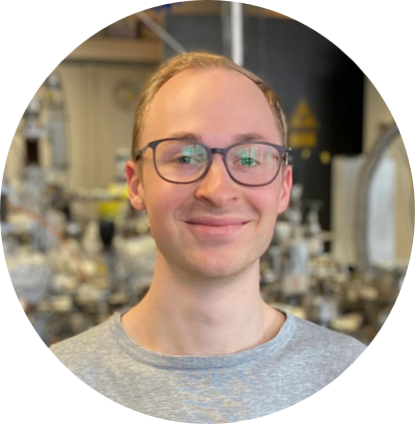For the characterisation of monodispersively deposited clusters and their substrate surfaces a high (HV, 10-3 – 10-7 mbar) or ultra-high vacuum system (UHV, <10-7 mbar) is necessary. Fig. 1 shows a model of the in-house designed HV/UHV system. The apparatus can be divided into seven sections that can be operated independently of each other.
Section 1 contains the cluster deposition system for the vaporisation of positively charged clusters or atoms. The central chamber (section 2) is used for storage under UHV conditions and for sample transfer. In the preparation chamber (section 3) a thermal treatment and/or ion bombardment under defined gas atmosphere of the substrates takes place. A high-pressure reaction cell is located in section 4 for the investigation of chemical properties under atmospheric pressure. In section 5 a combination of temperature programmed desorption or reaction experiment (TPD/TPR) and the surface sensitive analysis methods of Low Energy Electron Diffraction (LEED) and Auger Electron Spectroscopy (AES) is integrated. Samples can be loaded and unloaded into the system via the lock chamber (section 6) or transferred to the mobile vacuum chamber for transport under UHV conditions.
Vacuum generation in all chambers is done by two- or three-stage pumping systems. These consist mainly of a backing pump (fine vacuum <=10-3 mbar) and a turbomolecular pump. In the mobile vacuum chamber, a combination of active and passive ion getter pump is used in a single-stage configuration, as it can be operated flexibly with a mobile power supply.




